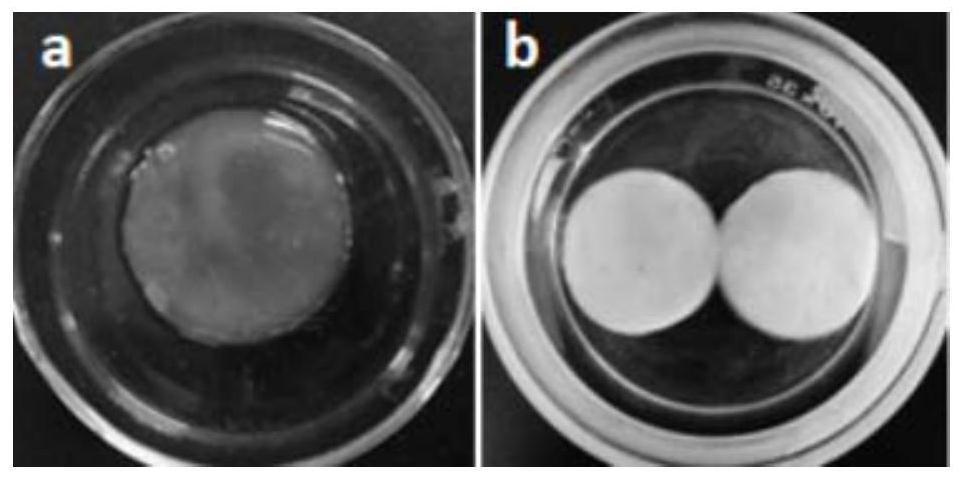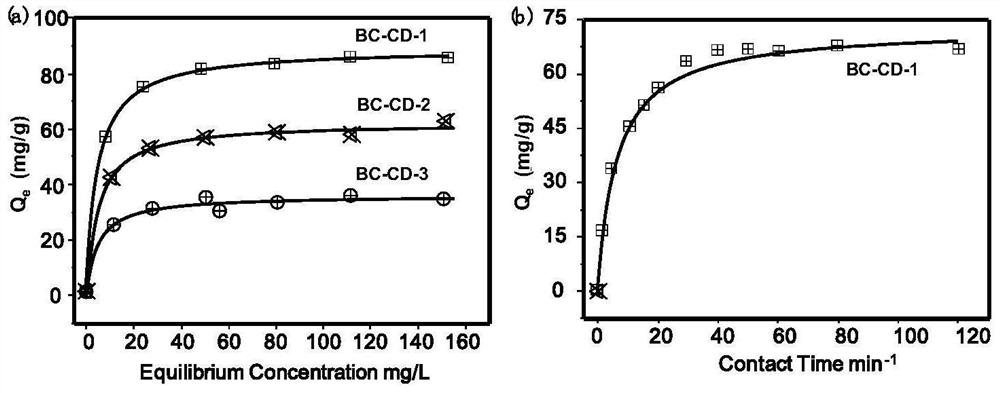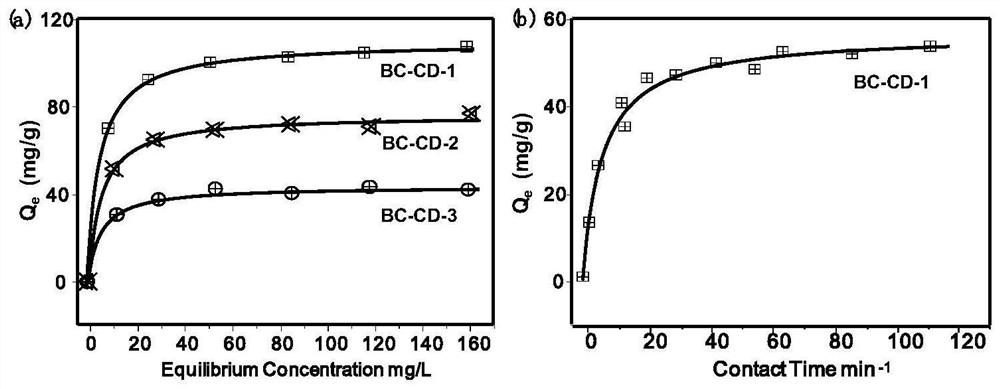Preparation method of bacterial cellulose/polymerized cyclodextrin composite material
A technology of bacterial cellulose and composite materials, applied in chemical instruments and methods, other chemical processes, water/sludge/sewage treatment, etc., can solve problems such as limiting the ability to remove pollutants
- Summary
- Abstract
- Description
- Claims
- Application Information
AI Technical Summary
Problems solved by technology
Method used
Image
Examples
Embodiment 1
[0028] Step 1. Add β-CD (4.34g, 3.82mmol) and 50ml of anhydrous pyridine to a three-necked flask, stir for 1 hour, and cool to 0°C in an ice-water bath. Then TCL (10.86g, 53.56mmol) dissolved in 20ml of anhydrous DMF was added dropwise to the pyridine solution. Subsequently, the reaction was stirred at 70°C for 4 hours. After cooling, 100ml of water was slowly added to the suspension. The filtered product was repeatedly washed with excess water and acetone, and finally the product was dried in a vacuum oven at 100°C for 24 hours to obtain a white solid, which is a polymerized cyclodextrin product.
[0029] Step 2. Take the polymerized cyclodextrin (3.0g, 0.5mmol) and sodium hydride (NaH) (0.3g, 12.5mmol) of step 1 and add them to 100ml of DMF solution. Stir at 25°C for 30min to activate the polymerized cyclodextrin material . Then the product is rotary evaporated to separate the solvent and the product. The obtained white solid is the activated sodium salt of polymeric cyclodex...
Embodiment 2
[0034] Step 1. Add β-CD (4.34g, 3.82mmol) and 50ml of anhydrous pyridine to a three-necked flask, stir for 1 hour, and cool to 0°C in an ice-water bath. Then TCL (6.51g, 32.13mmol) dissolved in 20ml of anhydrous DMF was added dropwise to the pyridine solution. Subsequently, the reaction was stirred at 70°C for 4 hours. After cooling, 100ml of water was slowly added to the suspension. The filtered product was repeatedly washed with excess water and acetone, and finally the product was dried in a vacuum oven at 100°C for 24 hours to obtain a white solid, which is a polymerized cyclodextrin product.
[0035] The subsequent steps are the same as the last three steps in Example 1, and are named BC-CD-2.
[0036] by figure 2 It can be seen that the adsorption capacity of BC-CD-2 material for phenol, aniline and bisphenol A can reach 58.6mg / g, 71.5mg / g and 40.5mg / g respectively. At the same time, it can be seen that the material has faster adsorption kinetics.
[0037] Table 1 Bacterial ...
PUM
| Property | Measurement | Unit |
|---|---|---|
| Adsorption capacity | aaaaa | aaaaa |
| Adsorption capacity | aaaaa | aaaaa |
| Adsorption capacity | aaaaa | aaaaa |
Abstract
Description
Claims
Application Information
 Login to View More
Login to View More - R&D Engineer
- R&D Manager
- IP Professional
- Industry Leading Data Capabilities
- Powerful AI technology
- Patent DNA Extraction
Browse by: Latest US Patents, China's latest patents, Technical Efficacy Thesaurus, Application Domain, Technology Topic, Popular Technical Reports.
© 2024 PatSnap. All rights reserved.Legal|Privacy policy|Modern Slavery Act Transparency Statement|Sitemap|About US| Contact US: help@patsnap.com










